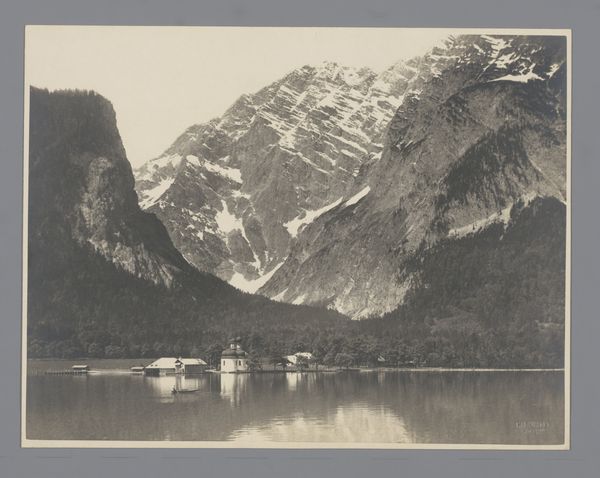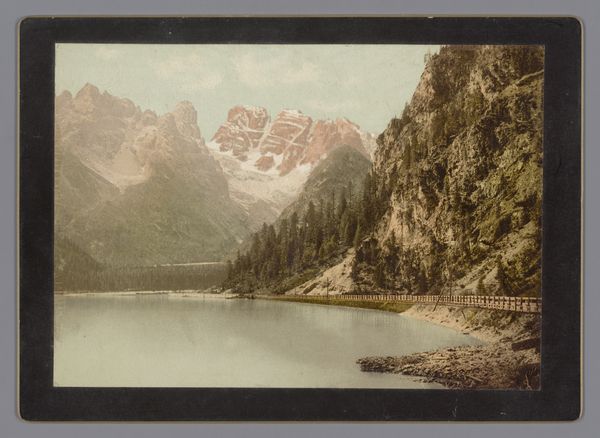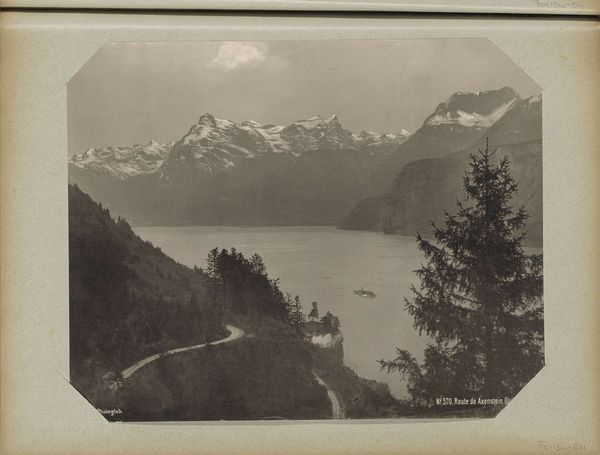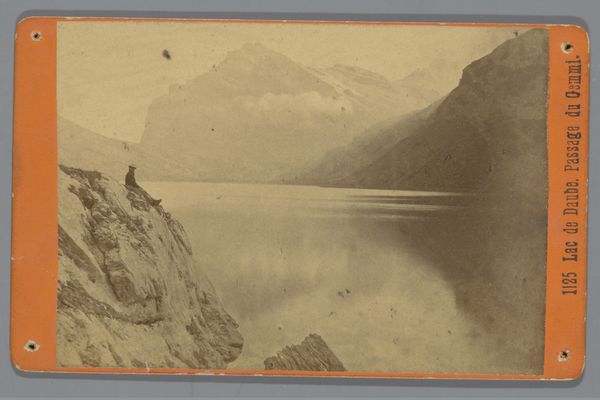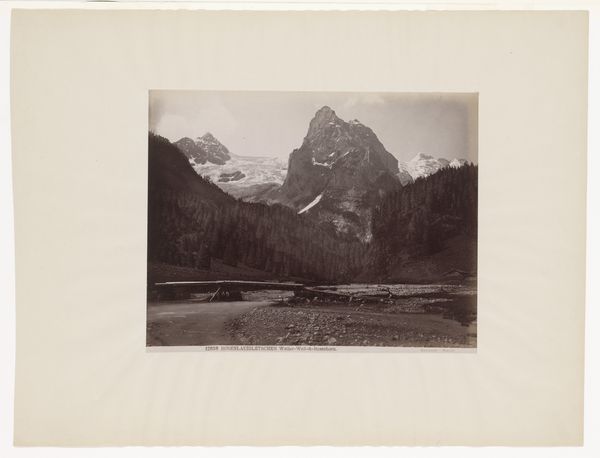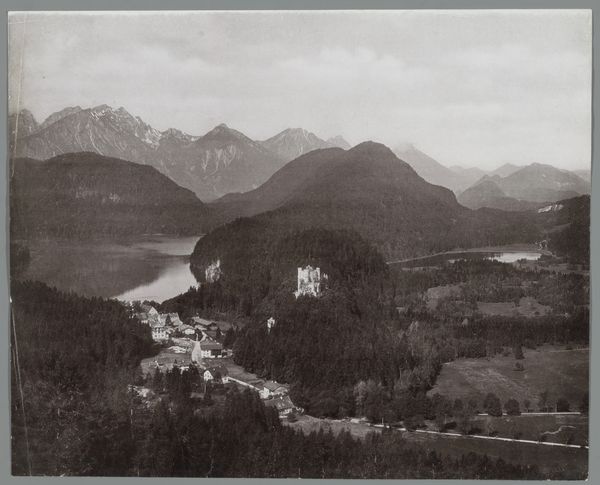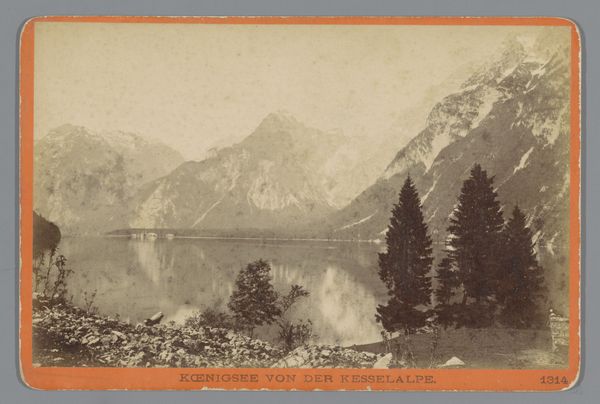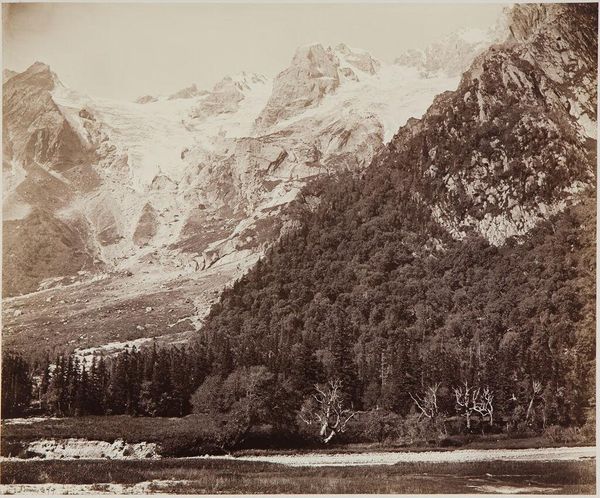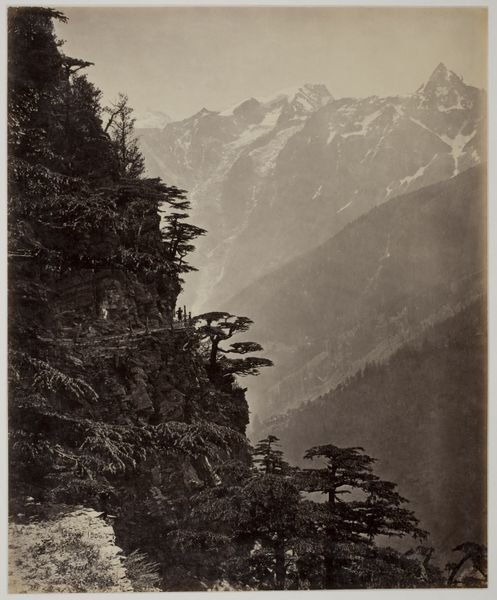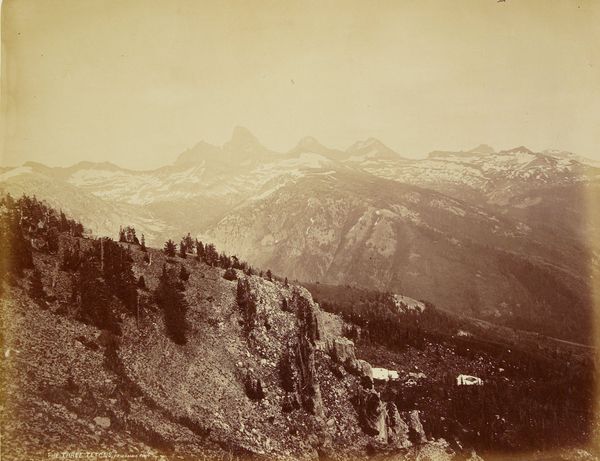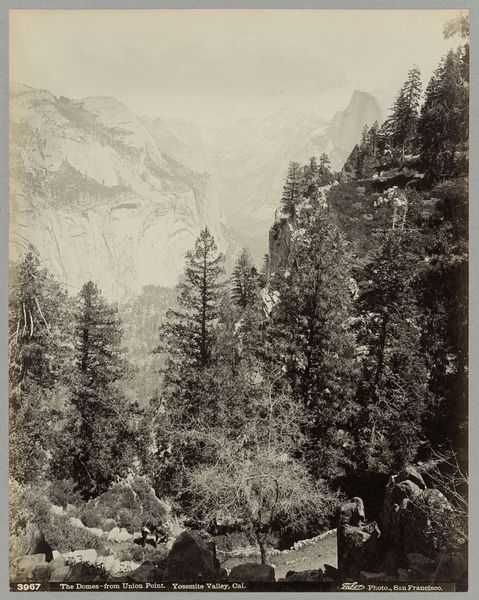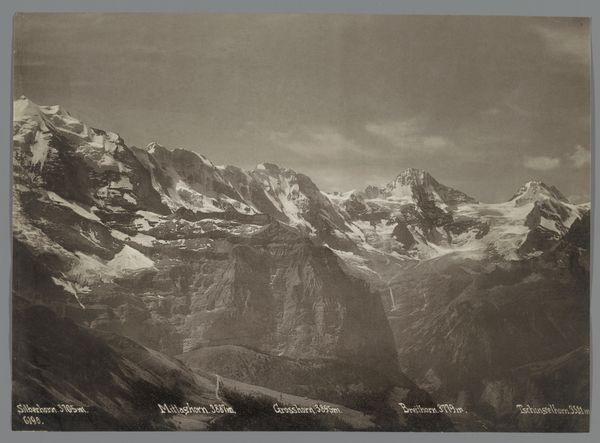
photography
#
pictorialism
#
landscape
#
photography
Dimensions: height 163 mm, width 218 mm
Copyright: Rijks Museum: Open Domain
Editor: So here we have a photograph titled "Urnersee, kanton Uri, Zwitserland," or Lake Uri in Switzerland, captured sometime between 1900 and 1920 by the Gebrüder Wehrli brothers. It has a sort of peaceful, yet epic, feel to it. What really strikes you about this photograph? Curator: It whispers to me of time itself. Look at how the soft focus melts the distant peaks into an ethereal realm, like a half-remembered dream. The stillness of the lake mirrors a world pausing for breath. Doesn't it remind you of old postcards, a yearning for places unseen? The Wehrli brothers weren’t just documenting; they were evoking a mood. Notice how they play with light and shadow. What do you think that says about their intention? Editor: Well, the almost painterly quality suggests they were aiming for something more than just a snapshot; perhaps they saw photography as an art form capable of capturing more than just reality. Almost like… an emotion. Curator: Precisely! It’s Pictorialism at its finest. They manipulated the process to create an artistic impression. They were saying, “We’re not just recording; we’re creating." Does that soften any perceived boundaries between science and art for you? Editor: Definitely. I hadn't considered how much intention and artistry went into early photography like this. It's easy to forget they were pioneers. Curator: It is indeed an invitation to reconsider our expectations when looking back through art history. Always question what the artist truly seeks to capture and why that captivation moves us still. Editor: That's such a cool way to put it! I'll definitely look at photography differently now. Thanks!
Comments
No comments
Be the first to comment and join the conversation on the ultimate creative platform.
